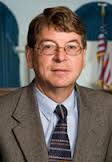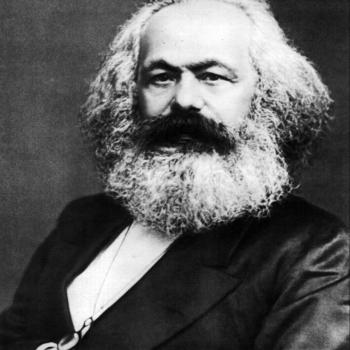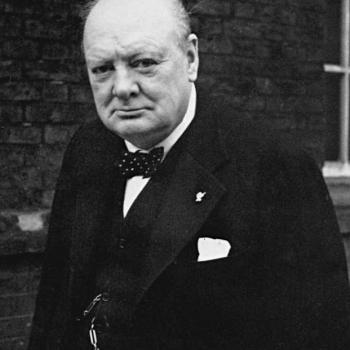 I’m probably going to need to shorten that title in future installments…
I’m probably going to need to shorten that title in future installments…
As I mentioned before, every month or so I try to break with my lifelong habit as an old white male might-as-well-have-grown-up-in-Orem Mormon of reading only the assigned, duly correlated Manuals — and, of course, Mormon Doctrine and The 5000-Year Leap — in order to experience the transgressive rush of dipping my toe in the pool of “secular” scholarship. Kindle affords me the ability easily to cut and paste passages.
So today I present a brilliant legal scholar, Steven D. Smith. Steve, if memory serves, has taught at the University of Colorado and at Notre Dame, among other places. Now, having the pick of climates, apparently, he has chosen to be Warren Distinguished Professor of Law at the University of San Diego and Co-Executive Director of the USD Institute for Law and Religion. I am hoping ere long to make him my guest to speak and discuss at BYU.
Ponder these juicy quotes just a bit, and I bet you will be impelled to read Smith’s The Rise and Decline of American Religious Freedom.
Without denying the episodes of intolerance and bigotry to which Americans (like other human beings throughout history) sometimes have succumbed, the revised story sees the Republic’s first century and a half as the period in which the country’s distinctive and distinctively promising approach to religious pluralism—what we might call “the American settlement”—was worked out and progressively realized. 195
From the Republic’s beginning, Americans have generally agreed on the importance of religious freedom, but they have strenuously disagreed about what religious freedom means, or what it entails. And far from settling such disagreements, the American approach preserved and protected them. More specifically, understandings of religious freedom have reflected broader, competing interpretations of the American Republic. Thus from the outset some prominent and patriotic Americans (including Washington, Adams, Lincoln) have acted on providentialist interpretations of the nation; other equally prominent and patriotic Americans (Jefferson, Madison, Jackson) have embraced more secularist interpretations. 203
The American settlement operated to ensure that both the providentialist and secularist interpretations would have a continuing place at the constitutional table. 209
Unfortunately, the modern Supreme Court rejected this settlement—or simply failed to understand it. Consequently, when the Court decided to intervene aggressively in the nation’s religious affairs in the second half of the twentieth century, it in essence dissolved the principle of open contestation that had been central to the American settlement, elevated one of the perennially competing interpretations (namely, the secularist interpretation) to the status of hard constitutional law, and proceeded to impose that interpretation on the nation. 216
The result, to be sure, has been a constitutional jurisprudence widely regarded as incoherent, together with an increasing polarization of Americans sometimes described as the “culture wars.” 226
In attempting to realize the promise of religious freedom, in short, the modern Supreme Court unwittingly undermined the distinctive American settlement and initiated a divisive dynamic of resentment, alienation, and bewilderment that affects citizens both religious and secular. 232
Increasingly, therefore, theorists gravitate to the conclusion that there is no justification for giving special protection to religious freedom. 238
As a result, the status of religious freedom is currently in jeopardy, as the standard story says. But the threat comes not so much from religious conservatives who reject constitutional commitments as, perhaps paradoxically, from secular egalitarians who purport to be carrying out the commands of the Constitution’s (self-subverting) commitment to religious freedom. 242
The result of this history is that groups committed to sexual liberty naturally view traditional religion as their principal enemy.… If traditional religion is the enemy, then it might follow that religious liberty is a bad thing, because it empowers that enemy. 3152
Third, and perhaps most portentously, secular egalitarianism is like Christianity and Christendom (and unlike classical paganism) in that it is not content to regulate outward conduct but instead seeks to penetrate into hearts and minds. 3224
“[r]eligious beliefs that gay and lesbian relationships are inferior to heterosexual relationships harm gays and lesbians.” 3247
This conclusion—namely, that a set of religious beliefs in itself constitutes a harm to other citizens and a violation of their equality—demonstrates the fundamental conflict between traditional religion and the emerging egalitarian orthodoxy. 3250
Once secular egalitarianism is accepted and entrenched as the prevailing orthodoxy, how much sympathy or toleration can they expect to receive over the long run from their new and puritanically egalitarian secular masters? 3258
As we saw in Chapter 4, however, the modern Supreme Court substantially undid the American settlement and reduced the possibilities of compromise by expanding the role of judge-enforced hard constitutional law in the domain of religion. 3281
In this book, we have considered a revised version of this story. In the revised version, the story begins in late antiquity with the emergence of a new religion—Christianity—with distinctive commitments to a separation of spiritual and temporal authorities and to an inner, saving religiosity that was of necessity sincere and voluntary. 3477
So the American embrace of church-state separation and freedom of conscience is best understood not as a radical innovation but rather as a retrieval and consolidation of these classic commitments (with a measure of easygoing pagan toleration mixed in) under the conditions of the American Republic. 3480
In the revised story, by contrast, religious freedom is being subverted by … religious freedom itself (as currently understood), which through its commitments to equality and neutrality and secular government has effectively deprived itself of its historical reasons for being. 3496










